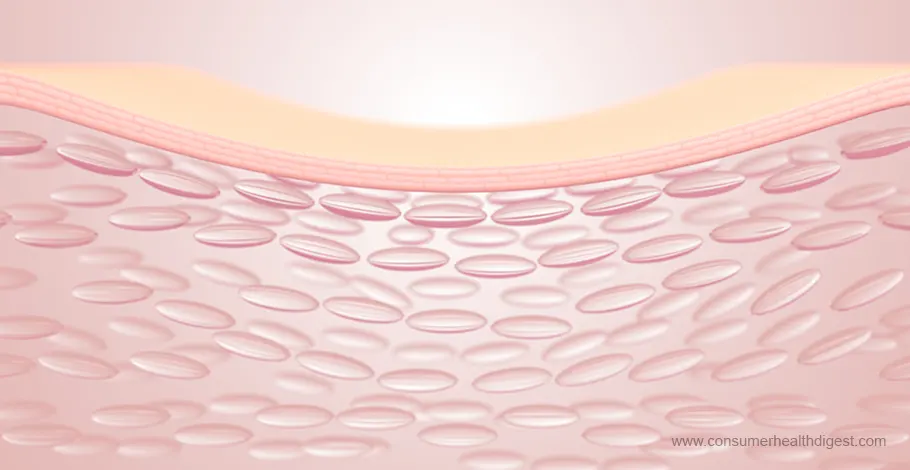Introduction
Our skin is a remarkable organ, serving as the body’s first line of defense against external threats and environmental insults. As the largest organ in the human body, it plays a vital role in protecting our internal structures, regulating temperature, and facilitating sensory experiences. Understanding the layers of the skin and their respective functions is crucial for maintaining optimal skin health and addressing various skin-related conditions.

Skin: Body’s Largest Organ
The skin’s significance extends far beyond its visible appearance. It acts as a barrier against harmful microorganisms, chemicals, and ultraviolet radiation, while also preventing excessive water loss from the body. Additionally, the skin is responsible for synthesizing vitamin D, sensing temperature changes, and transmitting sensory information such as touch, pressure, and pain. Recognizing the skin’s multifaceted roles underscores the importance of comprehending its complex structure and functions.
Anatomy of the Skin
The skin is a multi-layered organ composed of three main layers: the epidermis, dermis, and hypodermis (or subcutaneous tissue). Each layer plays a distinct role in maintaining the skin’s overall health and functionality. [1]
The epidermis is the outermost layer of the skin, serving as the body’s primary barrier against the external environment. This layer is comprised of several sub-layers, each with a unique structure and function.
Beneath the epidermis lies the dermis, a thicker and more complex layer that provides structural support, nourishment, and sensory functions to the skin.
The hypodermis, also known as the subcutaneous tissue or superficial fascia, is the deepest layer of the skin and plays a vital role in insulation, cushioning, and energy storage.
1. The Epidermis: Outermost Protection
Layers of Epidermis
The epidermis consists of four main layers:
- 1. Stratum Corneum: The outermost layer, composed of flat, dead cells called corneocytes, which provide a waterproof barrier and protect the underlying layers.
- 2. Stratum Granulosum: This layer contains cells that are undergoing keratinization, a process that produces keratin, a protein that contributes to the skin’s strength and flexibility.
- 3. Stratum Spinosum: Also known as the “prickle cell layer,” this layer contains keratinocytes that produce keratin and play a crucial role in the skin’s barrier function.
- 4. Stratum Basale: The deepest layer of the epidermis, containing stem cells that continuously divide and replenish the upper layers, ensuring the skin’s constant renewal.
Function
The epidermis serves several vital functions, including:
- 1. Barrier Protection: The outermost layers of the epidermis act as a physical and chemical barrier, preventing the entry of harmful substances and pathogens while minimizing water loss from the body.
- 2. Melanin Production: Specialized cells called melanocytes, located in the stratum basale, produce melanin, a pigment that provides protection against ultraviolet radiation and determines skin color.
- 3. Keratinization: The process of keratinization, which occurs in the upper layers of the epidermis, contributes to the skin’s strength, flexibility, and resistance to physical and chemical stresses.
2. The Dermis: Strength and Support

Layers Of The Skin. Shutterstock Image
Structure
The dermis is composed of two distinct layers:
- Papillary Layer: The outermost layer of the dermis, containing a network of capillaries that nourish the epidermis and dermal papillae that interlock with the epidermis, enhancing their adhesion.
- Reticular Layer: The deeper layer of the dermis, characterized by densely packed collagen and elastin fibers that provide strength and elasticity to the skin.
The dermis also contains fibroblasts, cells responsible for producing collagen and elastin, as well as a rich network of blood vessels, nerves, and lymphatic vessels.
Function
The dermis plays several crucial roles in maintaining skin health:
- Structural Support: The collagen and elastin fibers in the dermis provide tensile strength and elasticity to the skin, allowing it to withstand stretching and deformation without tearing.
- Nourishment: The blood vessels in the dermis supply nutrients and oxygen to the epidermis, while lymphatic vessels remove waste products.
- Sensation: Nerve endings in the dermis transmit sensory information, such as touch, pressure, temperature, and pain, to the brain.
- Thermoregulation: Sweat glands and blood vessels in the dermis play a crucial role in regulating body temperature through sweating and vasodilation/vasoconstriction.
3. The Hypodermis: Cushioning and Insulation
Structure
The hypodermis is composed of loose connective tissue containing adipose cells (fat cells) organized into adipose tissue. This layer also contains blood vessels, nerves, and lymphatic vessels, which support the overlying dermis.
Function
The primary functions of the hypodermis include:
- Insulation: The adipose tissue in the hypodermis acts as an insulator, helping to maintain body temperature by trapping heat close to the body.
- Cushioning: The fatty layer of the hypodermis provides a cushioning effect, protecting underlying structures such as muscles, bones, and organs from physical trauma and impact.
- Energy Storage: Adipose cells in the hypodermis store energy in the form of triglycerides, which can be mobilized and utilized by the body during periods of caloric deprivation or increased energy demand.
Interactions Between Skin Layers
The layers of the skin are not isolated entities; rather, they work in harmony, communicating and interacting with one another to maintain the overall health and function of the skin. The skin barrier, formed by the outermost layers of the epidermis, plays a crucial role in preventing infection and maintaining homeostasis by regulating water loss and protecting the body from environmental threats. [2]
Moreover, the skin layers are involved in the complex process of wound healing and regeneration. When the skin is injured, a coordinated response involving all layers is initiated, with the epidermis and dermis working together to repair the damage and restore the skin’s integrity.
Factors Affecting Skin Health
While the skin is a remarkably resilient organ, various external and internal factors can impact its health and functionality. Understanding these factors is essential for maintaining optimal skin health and addressing potential skin-related issues.
Exposure to ultraviolet radiation from sunlight is a significant risk factor for skin damage, including premature aging, sunburns, and an increased risk of skin cancer. Additionally, environmental pollution, particularly in urban areas, can contribute to skin irritation, inflammation, and accelerated aging. [3]
Conclusion
Understanding the layers of the skin is fundamental to maintaining its health and addressing various skin-related concerns. The epidermis, dermis, and hypodermis work in tandem, each contributing unique functions that collectively protect the body, facilitate sensation, regulate temperature, and provide structural support.
Proper skincare practices, such as using sunscreen, staying hydrated, and adopting a balanced diet rich in essential nutrients, can help preserve the integrity of the skin’s layers and promote overall skin health. Additionally, seeking professional advice from dermatologists or other healthcare professionals is crucial for addressing specific skin conditions or concerns.
As our understanding of skin biology continues to evolve through ongoing research, we can expect advancements in skincare techniques, treatments, and preventive measures. By gaining a deeper appreciation for the intricate layers of the skin and the factors that influence their health, we can take proactive steps to maintain the skin’s vitality and resilience throughout our lives.
3 Sources
We review published medical research in respected scientific journals to arrive at our conclusions about a product or health topic. This ensures the highest standard of scientific accuracy.
[1] Yousef, Hani, et al. "StatPearls [Internet]." Anatomy, Skin (Integument), Epidermis. StatPearls Publishing, 14 Nov. 2022, www.ncbi.nlm.nih.gov/books/NBK470464.[2] Kanwar AJ. Skin barrier function. Indian J Med Res. 2018 Jan;147(1):117–8. doi: 10.4103/0971-5916.232013. PMCID: PMC5967208.
[3] Gromkowska-K?pka KJ, Pu?cion-Jakubik A, Markiewicz-?ukowska R, Socha K. The impact of ultraviolet radiation on skin photoaging - review of in vitro studies. J Cosmet Dermatol. 2021 Nov;20(11):3427-3431. doi: 10.1111/jocd.14033. Epub 2021 Mar 13. PMID: 33655657; PMCID: PMC8597149.








